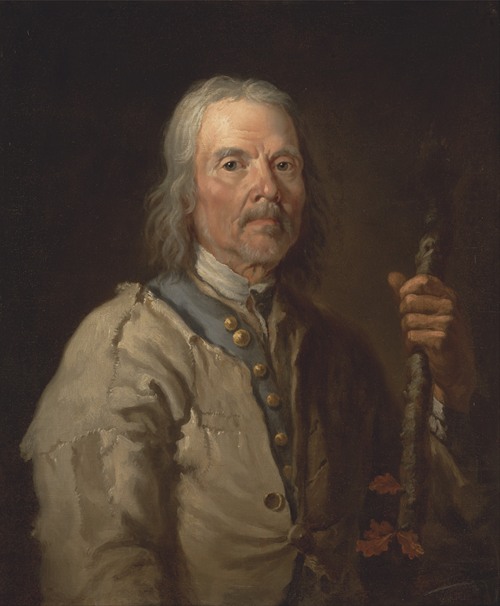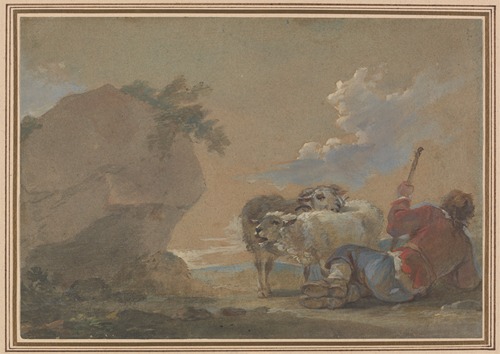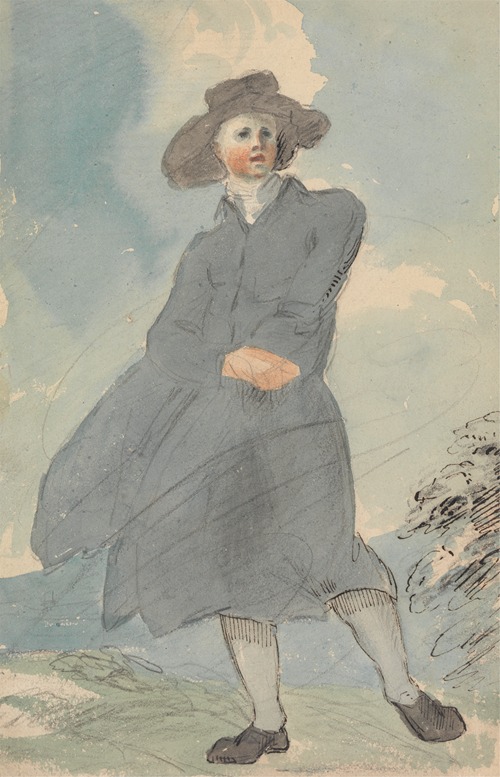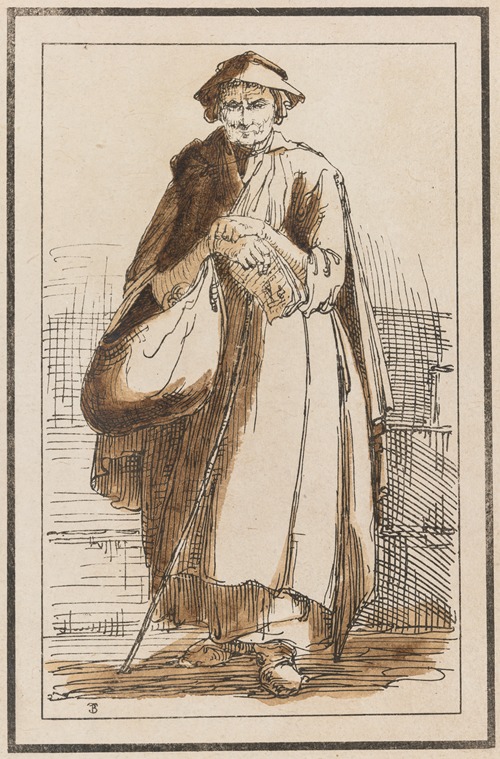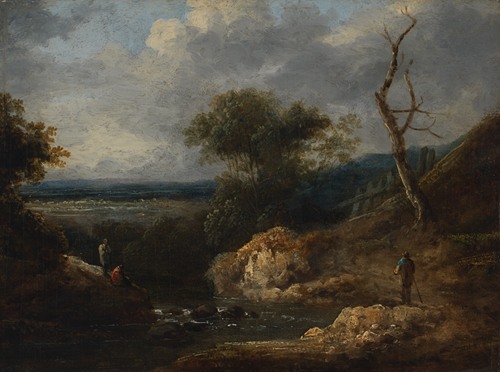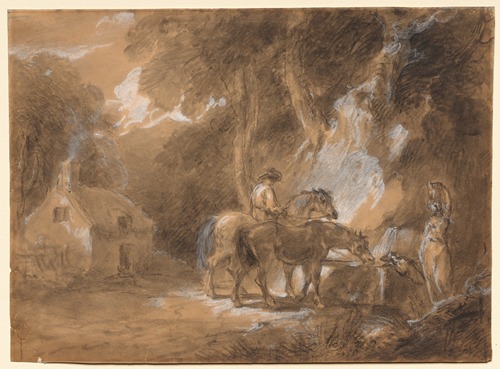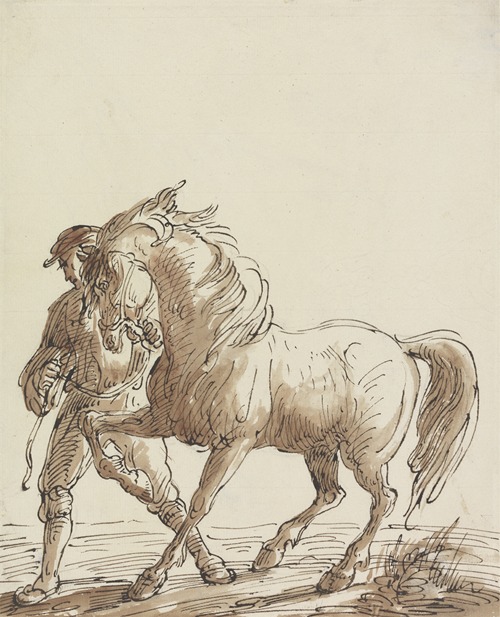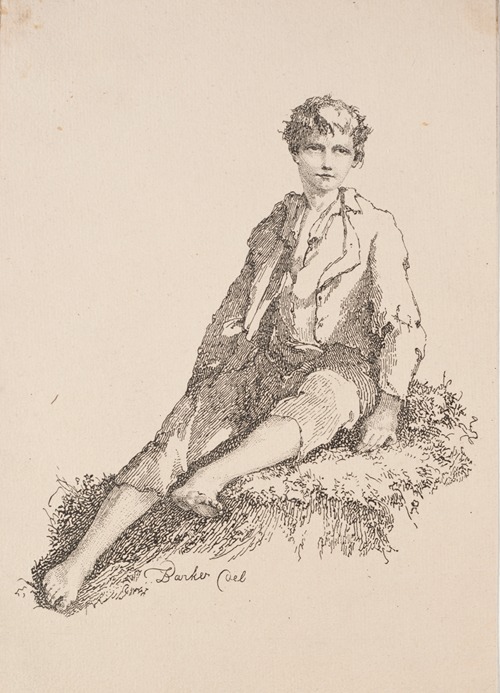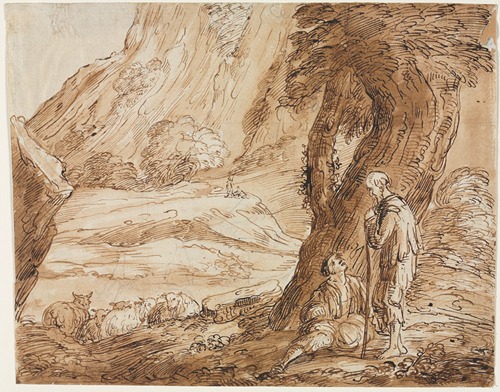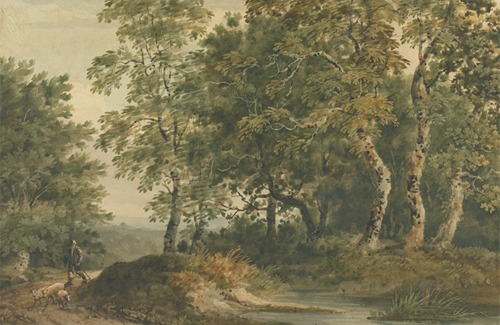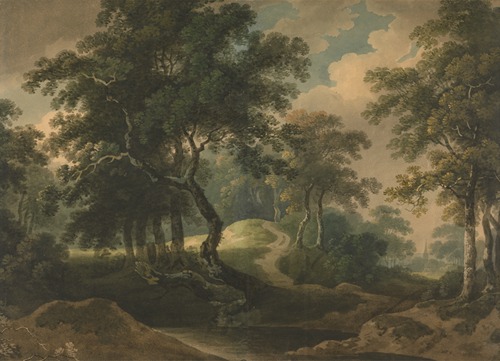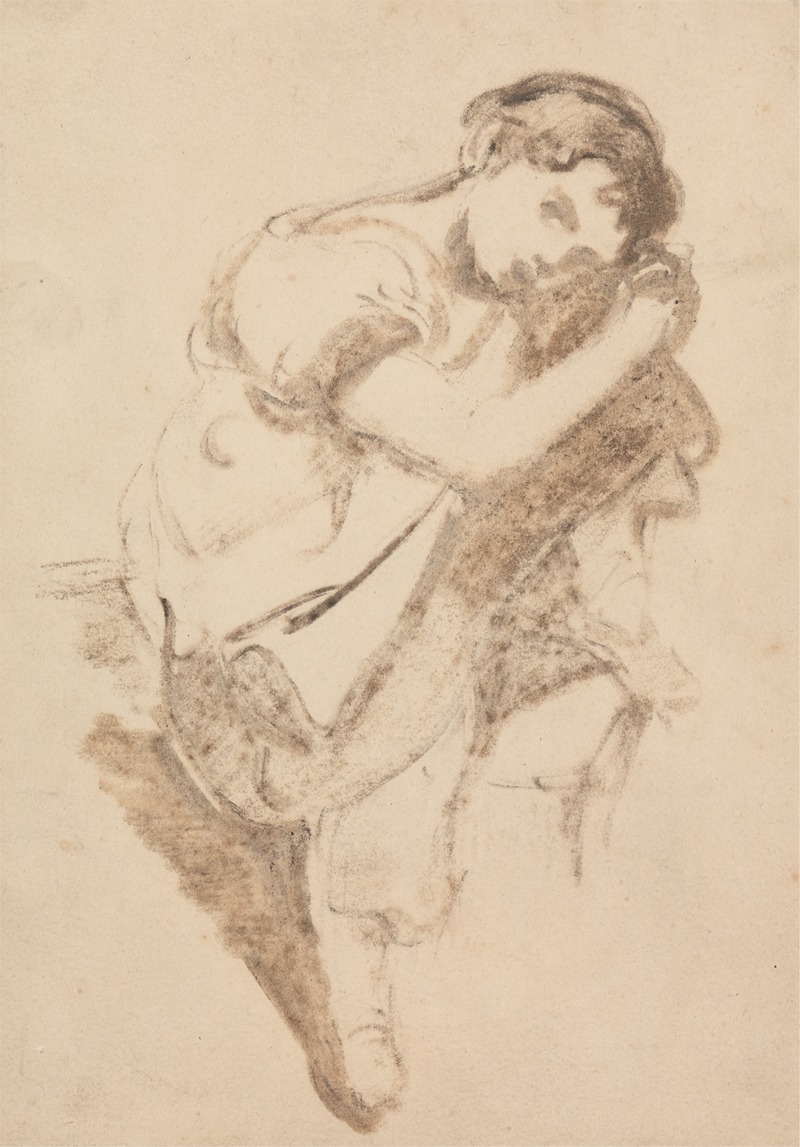
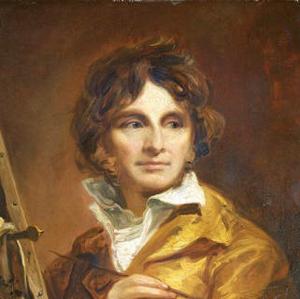
Thomas Barker or Barker of Bath, was a British painter of landscape and rural life.
Barker was born in 1769, at Trosnant near the village of Pontypool, in Monmouthshire. His father, Benjamin Barker, was the son of a barrister, and practiced as an artist, but never attempted more than the portraits of horses. He eventually took up employment as a Japanware decorator.
From an early age Barker showed a remarkable talent for drawing figures and designing landscapes, although he never took a lesson in either drawing or painting and was entirely self-taught. When he was sixteen his family moved to Bath where the patronage of an opulent coach-builder named Charles Spackman allowed him to follow his talent as an artist. During the first four years he employed himself in copying the works of the old Dutch and Flemish masters. At the age of twenty-one he was sent to Rome with ample funds to maintain his position there as a gentleman. While there he painted very little, contenting himself with society life.
Barker was an occasional exhibitor at the Royal Academy and the British Institution for almost fifty years, during which period he exhibited nearly one hundred pictures. He was a prolific artist, and painted a wide range of subjects. Few pictures of the English school are more generally known and appreciated than The Woodman, of which it appears two were painted, both of them from nature, and of life size: the first was sold to Mr. Macklin for 500 guineas; the second, for the same amount, became the property of Lord W. Paulett. In 1821 he painted the Trial of Queen Caroline, which included portraits of many celebrated men; but perhaps the best effort of Barker's pencil skill was the fresco, 30 feet in length, and 12 feet in height, representing The Inroad of the Turks upon Scio, in April, 1822, painted on the wall of his residence, Sion Hill, Bath.
While Barker's talents were in full vigour, no artist of his time had a greater hold on popular favour; his pictures of The Woodman, Old Tom (painted before he was seventeen years of age), and gipsy groups and rustic figures, were copied onto almost every possible material: Staffordshire pottery, Worcester china, Manchester cottons, and Glasgow linens. At one time he amassed considerable property by the sale of his works, and spent a large sum in building a mansion for his residence, enriching it with sculpture and other works of art. He died at Bath in 1847.
Barker was one of the first British artists to use Lithography as a print medium and contributed two prints Young Boy Seated, and Tilemakers to Specimens of Polyautography, the first British publication of a collection of Lithographic plates, originally published by Philipp André in 1803, and then reissued in an enlarged edition by Vollweiler in 1806-7. Barker's series of Rustic figures after nature published in Bath in 1813 in a small edition, is the first series of lithographs by a British single artist. Some of Barker's stones survive.
